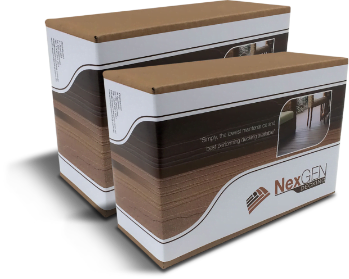Proper Installation of a Ledger Board – How to build a deck Part 3
This is part 3 in our how to build a deck series / ledger board.
Ledger boards are often overlooked when people consider timber or composite deck building, but proper installation of a ledger board will do wonders for the life of a deck and for the house it’s attached to.
A ledger board is attached horizontally to the side of the house and provides much of a deck’s strength; it supports the joists at one end, and it provides stiffness to the framing. Deck building using a ledger board have the advantage of not requiring an additional support beam and related footings running next to the house.
On weatherboard or timber framed houses it is fixed to a row of studs in the wall of the house in order to provide support to the floor joists of the deck. On brick houses it is fixed directly to the brickwork. Installing the ledger board incorrectly can lead to water damage in the house while skipping the ledger board completely will result in the deck sagging and ultimately collapsing.
Deck building tip: Before installing a ledger board on a timber framed house, you’ll need to remove any siding from the section of the house the board will be sitting on. This includes standard siding, stucco, and any other barriers. Removing all of these and bolting the ledger board properly ensures that it’s fastened securely to the house and can help support the deck above it.
Measure and cut your straightest board to fit the space. It’s also useful to mark out the locations of bolts and joist hangers at this point since that can be difficult to do once the board is in its final position. Pre-drilling the locations of these bolts will help you avoid splintering the board.
Before you lift the ledger board into place, it’s important to install flashing behind it and up under the edge of the siding. This will prevent water penetration and save the house from any structural damage. Depending on the size of the deck, you may have to overlap pieces of flashing to cover the area. If this is the case, simply overlay the pieces and then use silicon caulk to cover the seams.
The most common way to secure the ledger board is to place two bolts at each end of the board and one in each joist cavity. Once the ledger board is installed over the flashing, bend the flashing at the top and sides to help water drain away from the house and place Z-flashing at the top. Never nail or screw decking through the top of the ledger board as this can create space for water to seep in. Once installed, the ledger board should serve as a guide to deck building the rest of the frame from.
Contact Us
If you have questions about deck building or the proper installation of a deck’s ledger board, or are in need of high-quality maintenance-free materials, contact us!
Products
Gallery
Contact
Direct Office Numbers
Adelaide – (08) 6316 0469
Brisbane – (07) 3041 6065
Melbourne – (03) 8672 6444
Sydney – (02) 8072 6220

